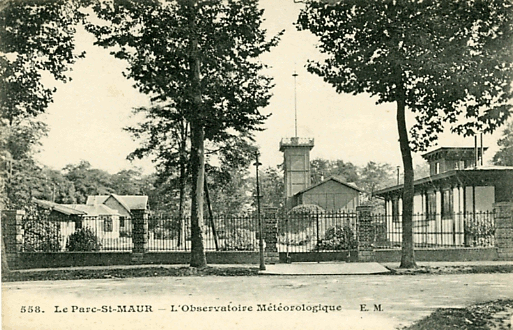
Founded in 1906 as the Central Bureau of Terrestrial Magnetism for the calculation of the "International Magnetic Character", it was hosted by the Koninklijk Nederlands Meteorologish Instituut (De Bilt, The Netherlands) until 1987. During the IUGG meeting in Vancouver, 1987, it was decided to move ISGI to France, and to place it under the joint responsibility of M. Menvielle and A. Berthelier. It was first hosted by the Institut de Physique du Globe de Paris (IPGP, France). In 1990, it moved to the Centre d'étude des Environnements Terrestres et Planétaires (CETP, Saint-Maur-des-Fossés, France) which was replaced, in 2009, by LATMOS (Laboratoire Atmosphères, Milieux, Observations Spatiales, Guyancourt, France). ISGI was hosted by LATMOS. Prof. Michel Menvielle was in charge of the service since 1987 up to 2014.

ISGI headquarters moved to EOST in early 2015 under the guidance of Aude Chambodut.
During the last decades, producers of geomagnetic indices had to cope with crucial changes that occurred in geomagnetic observatory practice and data dissemination: digital magnetometers replaced analogue magnetometers, Internet and computer developments resulted in a revolution in data handling, and – as a consequence of Internet facilities – users strongly required to have preliminary values of geomagnetic indices available on-line within delays as short as possible. This challenged the quality stamping data policy, and even the possibility to continue the production of high quality long term data series.
The evolution of geomagnetic indices activity management during this transition period evidenced the importance of IAGA as a reference institution for the policy in matter of indices. ISGI and the ISGI Collaborating Institutes have the responsibility to ensure the homogeneity of the data series and the quality data stamping in close cooperation with observatories and research activities. This is strikingly illustrated by on-line dissemination of preliminary (or quick-look) values of indices acknowledged by IAGA: ISGI Collaborating Institutes decided to routinely make available on-line state of the art preliminary values (few hours to two days delay: in 1996 for am, aa, Dst, and AE indices, and few years after for Kp index; 30 minutes delay: 2004 for aa), and IAGA urged the "producers of the estimated indices to clearly label them" (Resolution 5, IAGA News 38 1998, p. 42); this was made possible because of the deep involvement of the geomagnetic activity producers in Solar Terrestrial physics and Space Weather research activities. One of the major challenges is to keep this ability to find out solutions enabling the satisfaction of new requests from users without loosing the present quality of geomagnetic indices and the homogeneity of long term data series.